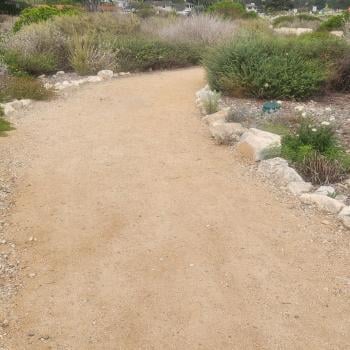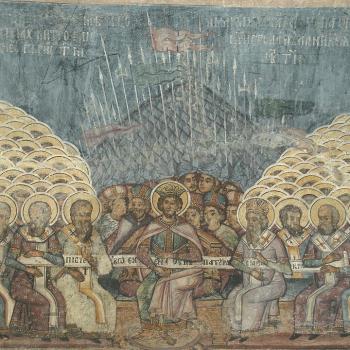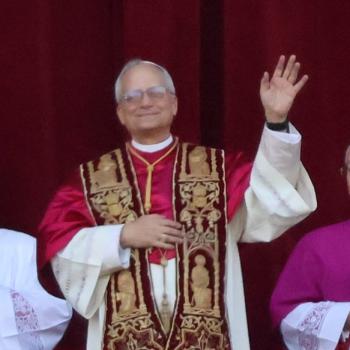As I’ve mentioned in a previous post, I am currently writing a children’s chapter book about St. Juan Diego for Ignatius Press’s popular Vision series. “Writing” is a generous term, since between launching the Great Books Program en español for the Angelicum Academy last week (it went so well!) and homeschooling my three children (K, 2nd, and 4th), I am advancing slowly on the manuscript. Writing this post has reignited my enthusiasm for the project.
According to Catholic tradition, Juan Diego was a widowed, middle-aged, recently-Christianized native commoner to whom the Virgin of Guadalupe appeared over several days in early December 1531, 10 years after the Castilians with their African slaves and indigenous allies vanquished Mexico-Tenochtitlan. He was walking along a footpath past a hill called Tepeyacac (at-the-nose-of-the-mountain) on his way to Saturday morning Mass when he heard the ethereal singing of birds, then a voice from the crest of the hill sweetly calling him by name in Nahuatl (the Mexica [Aztec] language). He encountered an ichpochtli, or young unmarried native woman, outlined brilliantly in the pre-dawn darkness. Maternal despite her youth, she spoke with him tenderly, asking him to go to the local bishop, fray Juan de Zumárraga, a Franciscan, and request that he build a chapel in her honor at that location so she might hear the cries of her people.
As to be expected, the friarly teopixque (person-who-guards-the-divine) though kind, did not believe the poor macehualli (native commoner) and asked him to return another day. Juan Diego reported his failure to the Lady and asked her to send somebody important, but she assured him that he was the messenger she desired. She asked him to try again and he agreed to return to the bishop the following morning. After Sunday Mass, Juan Diego visited fray Juan de Zumárraga again, and though the friar questioned him, he would not believe without a divine sign. After reporting the disappointing encounter to the Lady back at Tepeyacac, Juan Diego agreed to return in the morning for a sign she would provide.
Upon reaching home that evening, however, Juan Diego found his uncle, Juan Bernardino, also a Christianized Nahua, in his death throes. Setting out in the early morning darkness to fetch a priest, Juan Diego took the long way around Tepeyacac to avoid the Lady, but she saw him, stopped him, and asked where he was going. He politely requested that he be pardoned from their meeting given his important errand. After revealing that Juan Bernardino had been healed, the Lady instructed Juan Diego to gather the flowers that were growing on the hillside, Caxtillan xochitl (Castilian flowers) and take them to the bishop as a sign. He went and gathered the flowers, showing them to the Lady who gathered them in her arms and then arranged them in his tilmatli (working class maguey-fiber cloak) with her own hands – this is my favorite part!
When, in the presence of the friarly teopixque, Juan Diego let fall the blossoms, the Virgin’s image imprinted itself on the cactus fibers. The bishop, regretting his disbelief, took the image off Juan Diego’s neck and placed it in his personal oratory. The next day, fray Juan de Zumárraga asked the humble reed mat seller to take him to the site where the Lady had appeared, and a contingent from the bishop’s residence followed him across the causeway to Tepeyacac. Afterwards, Juan Diego insisted on seeing his uncle and they would not allow him to go alone, accompanying him over the hillsides to his family’s complex of simple homes in Cuauhtitlan (Place-of-the-Eagle). There, Juan Bernardino confirmed that the Lady appeared to him and revealed her name as “Guadalupe” — or at least this is what the Spaniards heard, recognizing the name from an existing Virgin in Spain; to the Nahuas this word would have been unpronounceable as Nahuatl lacks a d or g.
The bishop oversaw construction of the chapel and devotion began immediately among the native population, or as the Nahuatl story beautifully describes it: “There was a movement in all the altepetls [city-states] everywhere of people coming to see and marvel at her precious image. They came to show their devotion and pray to her; they marveled greatly at how it was by a divine miracle that she had appeared, that absolutely no earthly person had painted her precious image.” (The Story of Guadalupe: Luis Laso de la Vega’s Huei tlamahuiçoltica of 1649, 89).

The main complication in writing this book is that beyond the basic story line, we know very little about Juan Diego’s life. Indeed, several prominent Latin American historians, among them the late Vincentian priest, Stafford Poole, and British historian David Brading, deny Juan Diego’s existence altogether. Stafford Poole is one of the translators of The Story of Guadalupe: Luis Laso de la Vega’s Huei tlamahuiçoltica of 1649 (with Lisa Sousa and the late James Lockhart), the earliest extant written source we have in Nahuatl, published 118 years after the apparitions. Penned by Luis Laso de la Vega, the vicar of the Guadalupe chapel, it appeared one year after his friend, another priest named Miguel Sánchez, published Imagen de la Virgen María, Madre de Dios de Guadalupe, embedding the apparition story within an extensive biblical exegesis. Because of the unwieldy nature of the Sánchez publication, the concise Nahuatl version has become the official story, and it is the one upon which I rely for my narrative framework.
While devotional materials on Guadalupe have appeared steadily since the sixteenth-century, only recently have scholars such as Timothy Matovina, Professor of Theology at Notre Dame, begun arguing for the veracity of the story in ways we have not seen since pro-apparitionist writings published during Mexico’s colonial period. Our own former CFH secretary, Rick Kennedy, shared with me an article he penned defending Juan Diego and Guadalupe after visiting the Basilica of Our Lady of Guadalupe in Mexico City on a CFH trip that Ron Morgan and I co-led under the auspices of the CFH’s Latin American Initiative in 2019, and then reading Poole and Matovina.
I myself attended Juan Diego’s canonization ceremony in Mexico City on July 31, 2002 with my mother and my sister. Pope St. John Paul II presided over the canonization and with thousands of others, we lined the streets leading to the Basilica to watch the papal procession pass and to follow the ceremony on the large screens set up on street corners, witnessing the historical declaration of the first indigenous saint of the Catholic church. This experience serves as the epilogue to my book.
Images of the canonization of Juan Diego as the first indigenous saint of the Catholic Church in the Basilica of Our Lady of Guadalupe, Mexico City, July 31, 2002
Even so, how does one write 38,000-48,000 words in a captivating way for children about a saint whose biography is so limited and whose story involves only a few characters? Invention. Or more accurately, calling upon my training as a creative non-fiction writer (thank you, MFA!) to re-create the historical context of San Juan Diego’s world, relying heavily on Camilla Townsend’s Fifth Sun: A New History of the Aztecs and Barbara E. Mundy’s The Death of Aztec Tenochtitlan, The Life of Mexico City. And invention.
You’ve stayed with me this far, so…. what do indigenous engineers have to do with Juan Diego’s story? Nothing directly, for they are not characters in the story, and yet they affected Juan Diego’s experience profoundly precisely because of their absence.
Most renditions of the Guadalupe story that I’ve seen do not take into account that Mexico-Tenochtitlan was located on an island in Lake Texcoco, sharing the northern portion with the altepetl (city-state) of Tlatelolco. Residents remained connected to the mainland via three long causeways (raised roadways serving as dikes), which Juan Diego would have had to traverse to reach the bishop. Ten years earlier, in 1521 during the final 3-month siege of the Mexica-Castilian war, Hernando Cortés had launched 12 small brigantines he had built with his indigenous allies in Tlaxcala and carried in pieces to the lake outside Texcoco (see map below). Giving orders to destroy the aqueducts from Chapultepec and Nonohualco and thus cut off Tenochtitlan’s water supply, Cortés, his captains, and their indigenous allies attacked via causeway and lake, breaching the dikes separating the saltwater from the freshwater. European smallpox had already decimated the people and eventually the Mexica’s last tlatoani (Great Speaker) Cuauhtemoc surrendered from a canoe.
Because of the devastation, death, and flooding, Castilians did not occupy Tenochtitlan right away, but rather lived in nearby Coyoacan, across the lake, for three years. Cortés supposedly wished that Tenochtitlan would fall into the lake, and set up gallows to hang anyone who dared to settle there. For years the aqueduct and the dikes remained unrepaired, even after the Castilians moved to Tenochtitlan in 1524, so that when Juan Diego walked from his home village of Cuauhtitlan (Place-of-the-Eagle) across the causeway to “see the precious Mass” (a Nahua expression) in Tlatelolco in 1531, he would have passed the former freshwater lagoon whose waters were receding into the lower-lying salty lake. Previously supporting abundant man-made chinampan, or “floating gardens,” a technology the Mexica had learned from Chalco and Xochimilco, altepeme (city-states) they had conquered to the south, the waters in the lagoon in 1531 would have reeked from stagnation, and its aquatic life would have been suffering from these changes.

16th century map of the chinampan in the Chalco region (Archivo General de la Nación, Tierras vol. 2681, exp. 6)
Juan Diego would have been accustomed to crossing the northern causeway to attend the precious Mass with the Franciscan friars in Tlatelolco, but as a poor commoner, a weaver and seller of reed mats, he would have had no reason to visit Mexico-Tenochtitlan, the once-glorious Mexica (Aztec) capital, located in the heart of the island, unless the Lady sent him. As a first-time visitor, he would have noted his surroundings, which means it’s my job to research and describe to my young readers what he would have seen.

Close-up of modern chinampa in Xochimilco, south of Mexico City (www.mexicolore.co.uk)
The Mexica had constructed canals that crisscrossed the island, allowing canoes to enter with their goods, with paths lining the canals for foot traffic. Juan Diego would have walked alongside these canals, and what he would have seen would have been shocking. Since settling in Tenochtitlan seven years before, the Europeans had begun dumping dead animals (and dead native people!) and washing the runoff from slaughterhouses and tanneries into the canals, so that the water was polluted beyond recognition. During the period of Mexica power, native labor would have been dedicated to cleaning the canals, to taking freshwater to the chinampan and maintaining them, and to gathering and taking human excrement away from the island every night in canoes, among other tasks. Europeans, unaccustomed to living in an environment so closely associated with water (they were mostly from the dry region of Extramadura in Castile) either did not understand the value of these “menial” jobs, or preferred to use their indigenous labor on other projects. Either way, they discontinued those practices, going so far as to actively drain and fill in the lake, resulting in unpredictable flooding and a lack of freshwater that lasted for decades.

Artist’s rendition of part of the canal network linking the chinampan in Tenochtitlan; the squiggly lines indicate water and the footprints indicate that these are walking paths (www.mexicolore.co.uk)
In the 1530s, the tianquiztli, or marketplace, in both Tlatelolco in the north of the island and in Tenochtitlan in the central region, would have been dominated by native women, per Mesoamerican tradition, with items arranged on the ground by kind. The main currency would have remained cacao beans, for few Europeans frequented these markets. Women served as overseers and vendors, selling maize dough, cotton mantles, raw materials, foaming drinks, and eventually religious articles; visitors could also buy prepared food or get a haircut, and prior to European arrival, they could buy a slave or purchase a delicious bar of dried algae from the lake. Jonathan Truitt has a chapter on women in the marketplace, describing them as “cornerstones of Catholicism” in his book, Sustaining the Divine in Mexico Tenochtitlan: Nahuas and Catholicism, 1523-1700. Tenochtitlan’s tianquiztli would become a contested space in those early years, as Europeans considered it private property and native peoples viewed it as community land. In my story, Juan Diego traverses the marketplace in Tenochtitlan several times as he goes between the Lady and the bishop, and I have endeavored to re-create the sights and sounds of that early colonial experience for my readers.
Now, what about those indigenous engineers? Their knowledge stumped the Castilians, who made two expensive attempts early in the 16th century to repair the indigenous aqueducts and dikes they had broken, but failed. It would not be until 1575 that don Antonio de Valeriano, a native lord classically-educated at the Colegio de Santa Cruz de Tlatelolco would, with the support of the Viceroy, receive approval from the Spanish cabildo (town council) to re-construct the aqueduct. This means that Juan Diego would have lived through the before and the after. Even if he had not walked all the way to Tenochtitlan prior to the morning the Lady appeared to him, he would inevitably have heard about the wonders of Tenochtitlan’s waterworks and waterways, and of its order. For the Mexica, Tenochtitlan functioned as the center of the universe, and maintaining order, sustaining equilibrium, was essential for their continued existence. Because the Castilians failed to consult indigenous engineers, Juan Diego’s walk to Mexico-Tenochtitlan in early December 1531 was profoundly affected.

Artist’s rendition of the landscape surrounding Tenochtitlan and the dikes connecting it with the mainland; the dike of Nezhualcoyotl
(separating the brackish waters from the freshwater) is visible on the right (www.mexicolore.co.uk)
Barbara Mundy argues in her book, The Death of Aztec Tenochtitlan, The Life of Mexico City, that indigenous Tenochtitlan did not die so that Spanish Mexico City might live. Rather, she demonstrates how indigenous Tenochtitlan remained, with native peoples being instrumental in sustaining it. Without indigenous involvement in reconstruction and in repairing and caring for waterworks, Tenochtitlan might have sunk into the lake. Mundy identifies native agency in a polity’s shift into a city, mapping the continuities between Aztec Tenochtitlan and 16th-century Mexico City, and in the process, she reorients Spanish-centric historiography. You can read a portion of her research on early Tenochtitlan in Water and the Aztec Landscape in the Valley of Mexico, from which I’ve pulled several images in this post.
For my part, my book, Juan Diego and the Lady on the Hill, relays the well-known Guadalupe story from an indigenous rather than Eurocentric perspective, highlighting the beauties of Nahuatl language and culture against the backdrop of the origins of Mexican Catholicism. My goal is to contest stereotypes of native peoples as primitive, savage, heart-sacrificing people, and immerse my readers – young children and their families – in the world of early colonial Mexico. To my knowledge, this will be the first such attempt to really engage with the indigenous, historical, and geographical context of the Guadalupe story.
It’s been quite a challenge adjusting my writing to a younger audience, but I’ve enjoyed doing the research to re-create Juan Diego’s world and learning more about how Tenochtitlan, the indigenous polity, became Mexico City, a Spanish-indigenous metropolis. Writing a historically-accurate children’s book is a much more intense scholarly endeavor than I had anticipated. I look forward to sharing more of my discoveries as I advance on the manuscript.












